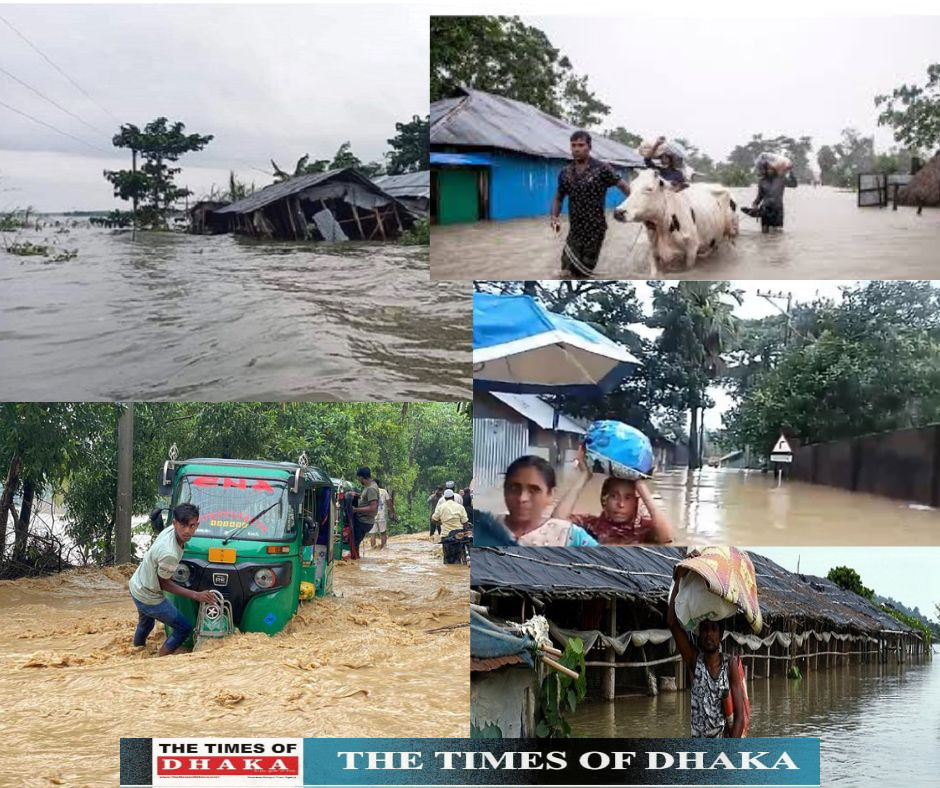
Bangladesh is currently grappling with one of the worst flood situations in recent years, with millions of people across the country affected. Heavy monsoon rains and the release of water from upstream rivers in neighboring countries have exacerbated the situation, leading to widespread flooding in several districts.
Areas Affected
The waters of the main rivers in the northeastern and eastern parts of the country are rising at the moment. The water of Kushiara, Manu, Dhalai, Khoai, Muhuri, Feni, Halda rivers is flowing over the border at 7 stations. Many areas of Noakhali, Laxmipur and Feni, from the neighboring border areas of Comilla to the Indian state of Tripura, have been submerged under water. The people of those areas are affected by the water crossing the border.
Humanitarian Crisis
The flooding has resulted in a significant humanitarian crisis, displacing hundreds of thousands of people from their homes. Many have sought refuge in temporary shelters, while others are stranded on rooftops or high ground, waiting for rescue. Access to clean drinking water, food, and medical supplies is becoming increasingly difficult, raising concerns about the spread of waterborne diseases.
Government and Relief Efforts
The government of Bangladesh, along with various non-governmental organizations (NGOs), is actively involved in relief operations. The military has been deployed to assist in rescue efforts, using boats and helicopters to reach stranded individuals. However, the scale of the disaster has overwhelmed the existing resources, and more aid is urgently needed.
Impact on Agriculture and Infrastructure
The floodwaters have devastated vast areas of agricultural land, destroying crops and livestock, which are critical sources of livelihood for millions of people. Additionally, infrastructure such as roads, bridges, and embankments have been severely damaged, disrupting transportation and communication networks.
As the monsoon season continues, the situation in Bangladesh remains precarious. The government and aid agencies are working tirelessly to mitigate the impact of the floods, but the sheer scale of the disaster presents significant challenges. Long-term recovery and rehabilitation will require sustained efforts and international cooperation to ensure that affected communities can rebuild their lives.

 A.B.M. Abir
A.B.M. Abir 


















